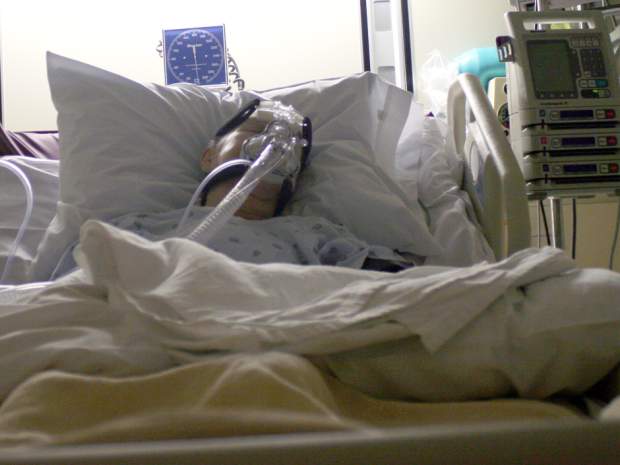
Hammering out the details in Canada’s new euthanasia regime
Canada could soon have the world’s most liberal euthanasia laws

Last February Canada’s Supreme Court declared that denying patients access to assisted suicide and euthanasia is a violation of their human rights. The federal, provincial and territory governments were given a year – until February 6, 2016 — to enact legislation consistent with its decision.
This week the Provincial-Territorial Expert Advisory Group on Physician-Assisted Dying released a report with points which should be incorporated into legislation throughout Canada. The changes to the legal system and medical practice are massive and unprecedented. There are only two months to go before the Supreme Court’s deadline, although the federal government has requested a six-month extension to ensure “a thoughtful, sensitive and well-informed response.”
It’s hard to predict whether all of the Advisory Group’s 43 recommendations will be implemented in all of Canada’s 11 jurisdictions. But if they are, Canada will have the world’s most advanced euthanasia legislation – even more progressive than the Netherlands and Belgium, which are currently the world leaders.
Another panel, appointed by the Federal government when conservative Stephen Harper was prime minister, has also submitted a report, which has not yet been made public. Two of its three members argued against assisted dying before the Supreme Court, and its recommendations are bound to be quite different. However, October’s election brought in a new government which supports assisted dying, so the report may end up in the dustbin.
The Supreme Court held that a competent adult person who clearly consents and has a grievous and irremediable medical condition that causes enduring suffering that is intolerable to the individual in the circumstances of his or her condition may be offered physician-assisted dying. With these conditions as a foundation for legislation, the Advisory Group hammered out its recommendations. It acknowledges that “the idea of physician-assisted dying remains ethically challenging for some”. But it does not appear that it tried to accommodate the dissenters.
Here are some of the more contentious recommendations.
- The unfamiliar term of “physician-assisted dying” (PAD) includes both euthanasia and assisted suicide. It should become an integral part of Canada’s palliative care system. It should be publicly funded.
- Although the “P” in PAD refers to physicians, a registered nurse or a “physician assistant”, a Canadian term for a trained health professional, can also should be able to write a prescription for a lethal drug or give a lethal injection.
- There should be no age limits for PAD: “eligibility for physician-assisted dying is to be based on competence rather than age.” This means that a 12-year-old could request euthanasia. Or a 7-year-old.
- The terms “grievous and irremediable” should not be defined in legislation or regulations. The patient will define what constitutes intolerable suffering.
- Two physicians must approve a request for PAD, but neither of them need special qualifications in psychiatry or in the disease from which the person is suffering.
- Canada is a vast country and physicians are not always readily available. Therefore virtual assessments over the internet should be available.
- There should not be a cooling-off period. “Rather, the time between initial request and declaration will vary according to the time it takes for the attending and reviewing physician to be confident that the declaration is free and informed and made by a competent individual.”
- The death certificate should list the cause of death as the underlying medical condition, not PAD. However PAD should be listed as “the manner of death”.
- Neither the Supreme Court nor the Advisory Group are sympathetic to conscientious objection. A doctor who refuses to provide PAD must refer. A faith-based institution will not be required to provide PAD, but must transfer the patient’s records to another institution. It must also allow PAD to take place on its premises.
- Provinces and territories should provide public education about PAD. This is a broad and ambiguous recommendation which could encompass classes in schools as well as information provided to patients and doctors.
Unsurprisingly, the report provoked very different reactions. In the Globe and Mail, André Picard described it as a refreshing step forward. “iI doesn’t rehash age-old arguments about whether assisted death is right or wrong, moral or immoral, legal or illegal. Rather, the starting point is that, given the Supreme Court ruling, this is going to happen, so it should happen in a clear, coherent fashion.”
But in the National Post, Andrew Coyne decried “the absurd logic of assisted suicide”. He points out that the rationale for the decision and subsequent legislation is “unlimited personal freedom”. PAD is being sold “as a release from suffering; not as an evil to be prevented, but as a service to be provided (indeed, the panel recommends it be done at public expense). This presents the right to die, not as a limited one, such as the right to drive, but as an unlimited one, inhering in all persons — rather like the right to life.”
https://www.bioedge.org/images/2008images/TH_euthansasia_canada.jpg
Creative commons
https://www.bioedge.org/images/2008images/die-1.jpg
Canada
euthanasia
- How long can you put off seeing the doctor because of lockdowns? - December 3, 2021
- House of Lords debates assisted suicide—again - October 28, 2021
- Spanish government tries to restrict conscientious objection - October 28, 2021
